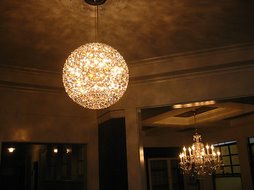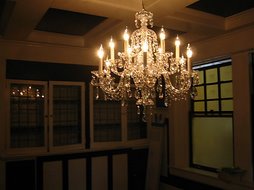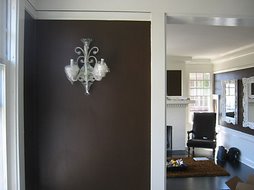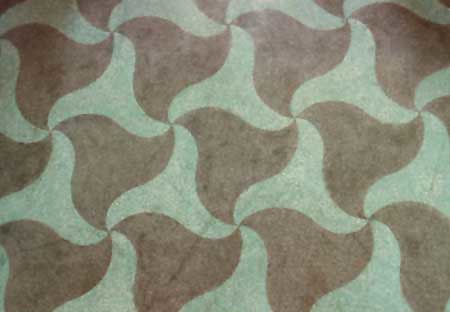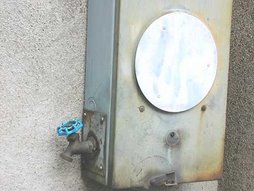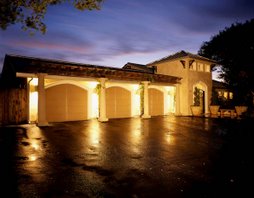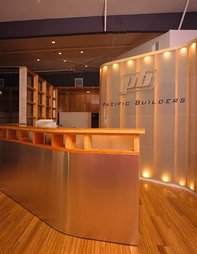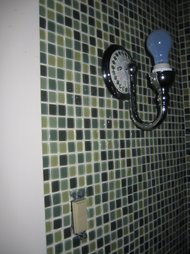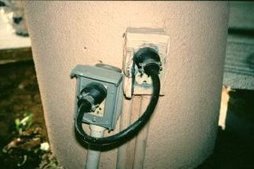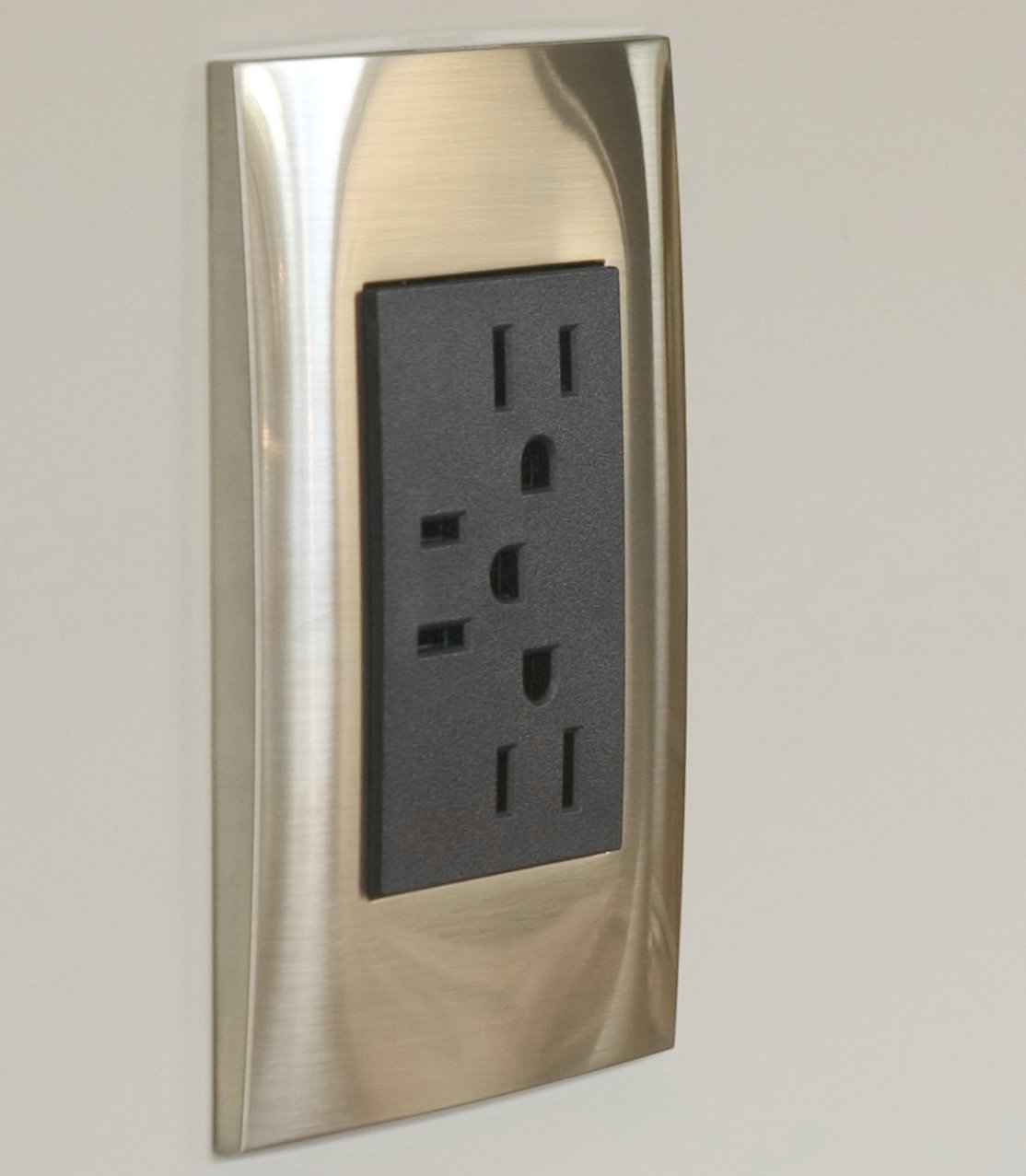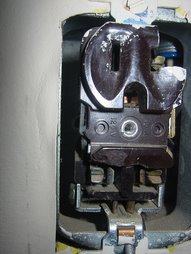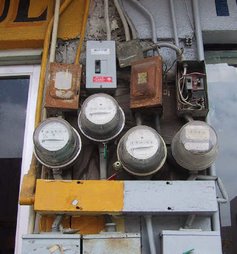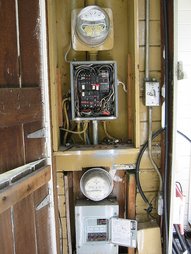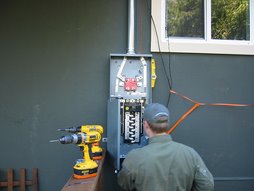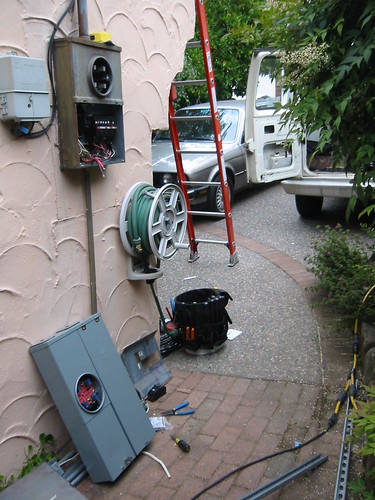
GROUND FAULT PROTECTION [GFI OR GFCI]
All receptacles listed below must be protected by a ground fault circuit interrupter.
According to IRC 2012, all 125-volt, single-phase, 15- or 20-ampere receptacles installed in garages and grade-level portions of unfinished accessory buildings used for storage or work areas shall have ground-fault circuit-interrupter protection for personnel.
All garage receptacles, without exception, including the ones that are not readily accessible.
In previous years, there were exceptions to the rule. But no longer. The reset also needs to be readily accessible so a ceiling mounted device is no good.
210.8 Ground-Fault Circuit-Interrupter Protection for Personnel. Ground-fault circuit-interruption for personnel shall be provided as required in 210.8(A) through (C). The ground-fault circuit-interrupter shall be installed in a readily accessible location. Informational Note: See 215.9 for ground-fault circuit interrupter protection for personnel on feeders.
(A) Dwelling Units. All 125-volt, single-phase, 15- and 20- ampere receptacles installed in the locations specified in 210.8(A)(1) through ( shall have ground-fault circuit interrupter protection for personnel.
(1) Bathrooms (2) Garages, and also accessory buildings that have a floor located at or below grade level not intended as habitable rooms and limited to storage areas, work areas, and areas of similar use (3) Outdoors
Exception to (3): Receptacles that are not readily accessible and are supplied by a branch circuit dedicated to electric snow-melting, deicing, or pipeline and vessel heating equipment shall be permitted to be installed in accordance with 426.28 or 427.22, as applicable. (4) Crawl spaces — at or below grade level (5) Unfinished basements — for purposes of this section, unfinished basements are defined as portions or areas of the basement not intended as habitable rooms and limited to storage areas, work areas, and the like
In the early 1880’s a patent was applied for the use of electricity to execute criminals condemned to death. In 1888, New York passed a law allowing for the electrocution of criminals, and in 1890 the first electrocution as a form of capital punishment took place. While public opinion and debate continued back then on the use of electricity for this purpose, accidental electrocutions became even more of a concern with the growing use of electricity in the home. By 1970, accidental electrocutions in the U.S. were exceeding 1100 per year.
The ground-fault circuit-interrupter (GFCI) was developed in the 1960’s based on a concept by Professor Charles Dalziel of the University of California at Berkeley. The GFCI became a success soon after it was developed into a commercial product by a handful of companies, including several circuit breaker manufacturers. The GFCI was first required by the Code in 1968 for underwater swimming pool lighting fixtures. Backyard swimming pools were becoming popular at that time as more and more city dwellers were moving to the more spacious suburbs. In subsequent years the Code was revised to add the required use of GFCIs to other areas of the house, especially locations where people would be standing on earth or cement ground, or near water.
By the 1980’s, receptacle type GFCIs were also becoming popular. Just 25 years after the GFCI was first introduced, the number of accidental electrocutions in the U.S. had dropped in half, even though the use of electricity had more than doubled in that same time period.
These are the locations in and around the home when GFCIs were first required:
- 1968 - Swimming Pool Underwater Lighting
- 1971 - Receptacles Near Swimming Pools
- 1973 - Outdoor Receptacles
- 1975 - Bathroom Receptacles
- 1978 - Garage Receptacles
- 1981 - Whirlpools and Tubs
- 1987 - Receptacles Near Kitchen Sinks
- 1990 - Receptacles in Unfinished Basements and Crawl Spaces
- 1993 - Receptacles Near Wet Bar Sinks
- 1996 - All Kitchen Counter-Top Receptacles
- 2005 - Receptacles Near Laundry and Utility Sinks








